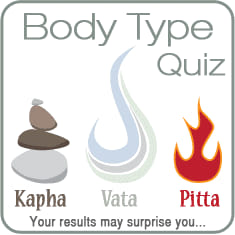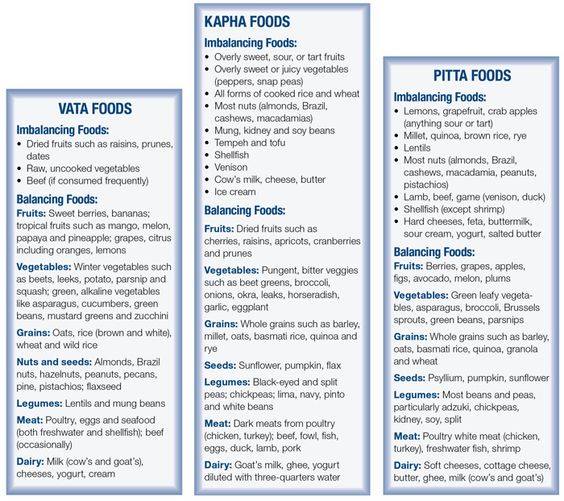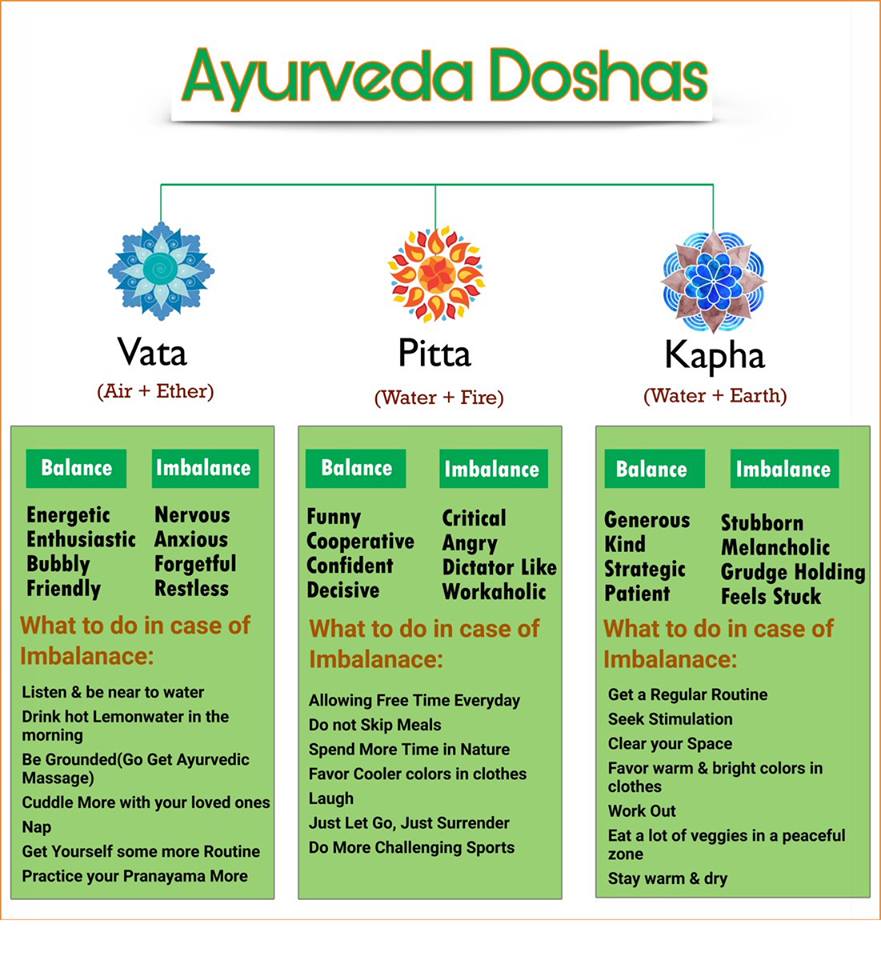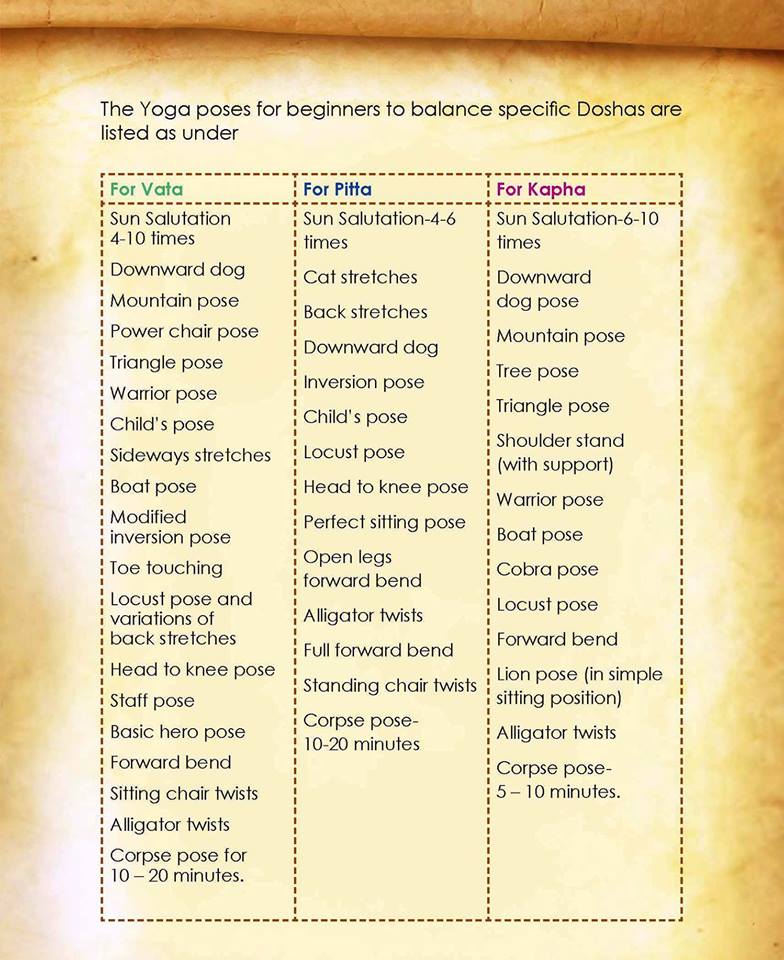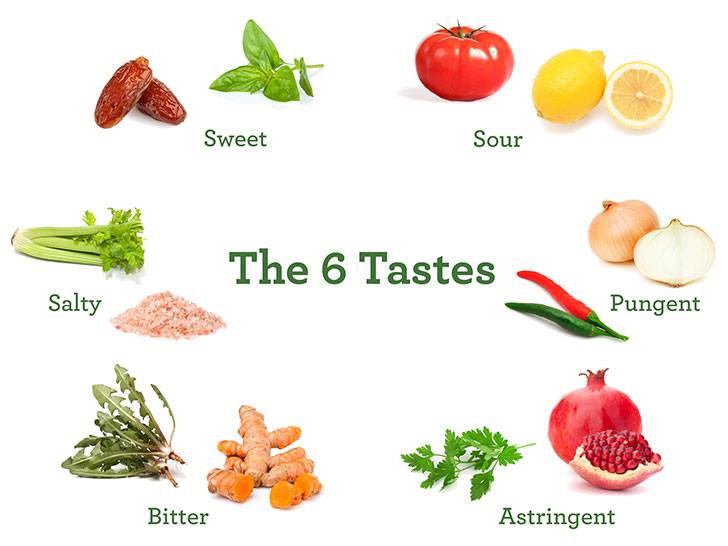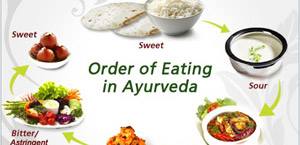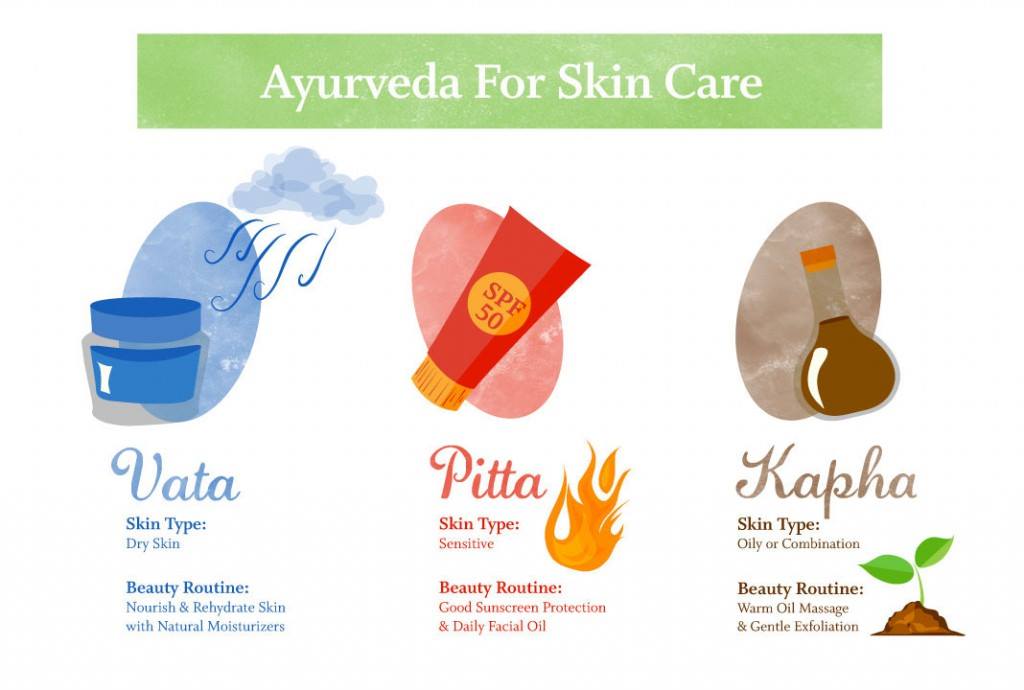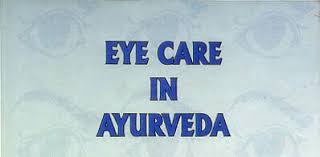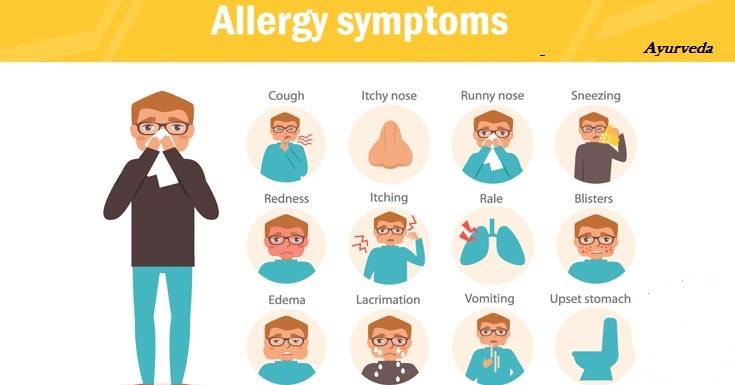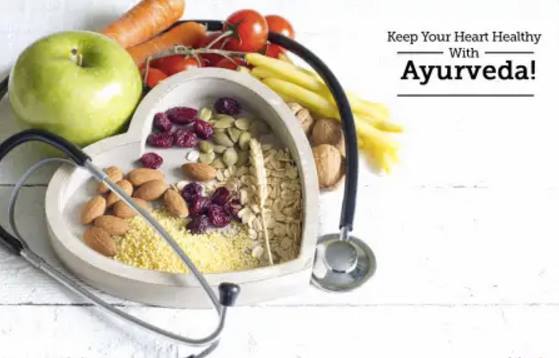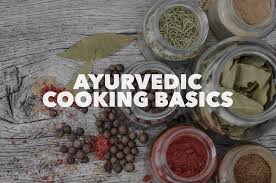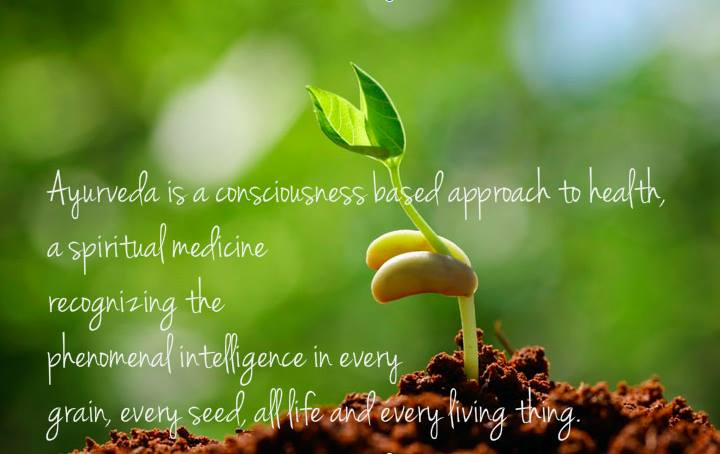Dr Shilpa Dhoka is a Jakarta based Ayurvedacharya and holistic wellness practitioner. The whole month of February 2019, she shared her knowledge on Indoindians Facebook as the ‘month of Ayurveda‘:
Feb 1
Ayurveda is ancient Indian Science of Preventive health &healing. Its approach is holistic and treats body, mind and soul as one.
Feb 2
Lets begin our Ayurveda journey by analysing following characteristics to teach one’s body composition. It can be one dominant dosha or combination of 2 or 3.
VATA Body type-
Enthusiastic, Vibrant, quick to learn, fearful, anxious indecisive & digestion issues.
PITTA Body type –
Competitive, Success-oriented, great intelligence, alert, precision& quick digestion.
KAPHA Body type –
Complacent, calm, lazy but hard working, methodical , good endurance & slow digestion.
Feb 3
After knowing our body type, lets look at food suitable for our dosha composition.
VATA pacifying food
Warm, moist, oily, smooth, sweet, sour and salty food.
PITTA pacifying food
Cool, dry, mild, sweet, bitter and astringent food.
KAPHA pacifying food
Light, warm, dry, rough, pungent, bitter and astringent food.
Feb 4
Every person is born with a unique balance of three doshas. Generally, one or two of the doshas will dominate, and this will determine the Ayurvedic routine for mind/body type. Remember that we each have Vata, Pitta and Kapha in our constitution, but in a different proportion. Here are some examples to help keep the dosha balance.
Feb 6
The Yoga poses for Vata calm the nerves, relax the muscles, and relieve the stress and make the person more grounded. The exercises directed towards Pitta, balance the circulation and improve the digestion, and induce coolness, patience and calmness. The exercises directed at Kapha increases circulation, removes congestion, makes the body lighter, and the mind more alert.
Feb 7
Pranayama is extension of breath. One must build enough strength and stability in the body and nervous system through yoga asana practice first, in order to withstand the increase in energy flow that pranayama generates.
After exercise, sit quietly and do some deep breathing exercises as follows:
12 alternate nostril breaths (anulom vilom) for vata;
16 cooling breaths by curling up your tongue lengthwise and breathing through it (shitali) for pitta;
100 short, fast breaths (bhastrika) for kapha.
Feb 8
Each one of us is working hard to make the most every minute. Ayurveda can help structure our day for greatest productivity and peace of mind as there are dosha times during day and night.
2-6AM AND 2-6PM: VATA TIME
Vata time is a time to be more creative and spiritual. There’s a reason why monks of all traditions wake up before 6am for their morning prayers. Vata time is the easiest time to feel connected to the world and to our best selves. The afternoon Vata time (2-6pm.) is the perfect time to brainstorm, start new projects, read, and make connections.
6-10 AM and 6-10PM: KAPHA TIME
Kapha time is an important one. Waking up in the 6-10am time frame makes us feel sluggish and tired. At work, use your kapha time to connect – have meetings, check in, or work on correspondence. For the 6-10pm time frame, this is the perfect time to wind down, see family, friends, and connect.
10AM-2PM and 10PM-2AM: PITTA TIME
Pitta is our most energetic time. Pitta time is also a great time to get stuff done at work. This is the time to pitch an investor, close a deal, and finish the books. Do methodical, detail-oriented work during this time, and you’ll find success.
Investigate your day and the times you feel lowest in energy or unhappy. Those could be the places where making some changes would bring the biggest gains.
Feb 10
Ama is undigested food residue due to poor agni that lodges itself within the organs and channels of the body. It is a form of un-metabolized waste that cannot be utilized by the body. To some degree, the formation of small amounts of ama is a normal part of the digestive process, provided it is efficiently removed. But when it is not regularly cleared and eliminated, ama becomes hugely problematic and the root cause of all disease.
Modern diseases that are a direct result of ama accumulation include Atherosclerosis, Elevated blood sugar, Ulcers, Blood Urea, Gout, Gall stones, Arthritis, Tumors and so on….
There are a number of ways to encourage the body to digest ama and eliminate it from the body through urine, feces and sweat. For instance,
- Using household spices like fresh and dried ginger, cinnamon, nutmeg, mustard seed, garlic, cumin, black pepper, fennel, and coriander in day to day meals.
- A gentle steam bath, sauna, or appropriate exercise helps warming the body and inducing sweat.
- Pranayama and Yoga
- Fasting
- Detox and cleansing therapies like panchkarma.
If you would like to get a general idea of your current ama levels, circle a number for each question below. A score between 0-15 indicates a low level of ama; 16-35 indicates a moderate amount of ama; and 36-50 indicates a high level of ama.
Ama Questionnaire
I often feel a sense of blockage in my body
(Such as constipation or congestion). 0 1 2 3 4 5
I often have difficulty digesting food. 0 1 2 3 4 5
I feel foggy when I wake up in the morning. 0 1 2 3 4 5
I tend to feel weak for no apparent reason. 0 1 2 3 4 5
I often feel lethargic and unmotivated. 0 1 2 3 4 5
I feel the need to cough regularly. 0 1 2 3 4 5
I become easily exhausted, both mentally and physically. 0 1 2 3 4 5
I frequently feel depressed. 0 1 2 3 4 5
I often have no taste for food 0 1 2 3 4 5
I catch a cold several times a year. 0 1 2 3 4 5
Feb 11
Ojas is considered the most refined byproduct of digestion. The body takes a full 30 days to refine the digested food enough to manufacture about 8 drops of ojas. A plentiful reserve of ojas is reflected in the luster of the eyes, radiance of the skin, tenacious immunity, strong digestion, and clarity of mind.
Simple ways to increase ojas include:
- daily oil massage and bath;
- a diet full of fresh, organic, food; ghee, milk, almonds, raw honey, dates, saffron, coconut and oranges are especially ojas-promoting;
- Regular use of medicinal herbs; ashwagandha, shatavari;
- laughing and loving others;
- proper sleep habits.
Feb 12
After understanding ama (toxins), its important to understand the ayurvedic detox regime to ensure production of Ojas, the elixir of life. According to Ayurveda, there are many different ways to fast and cleanse the body and since we are all unique we must find a cleansing method that suits our body type. If you have never done fasting before, as a safe start you can do a 1- day fast a week. Fasting in not about total abstinence from food, but a healthy rest for our digestive system can help it clear ama (toxins) and strengthen the digestive fire – something that is imperative in a world of over-consumption.
Here are a few 1-day fasting options:
- Clear liquid fasting: Drink clear, warm liquids like warm water, herbal teas, clear liquid/broth soups throughout the day and a light spiced bean soup in the evening.
- Fruit /juice fasting : Eat only ripe seasonal fruits for breakfast & lunch and drink clear liquids, herbal teas in between meals followed by a light spiced bean soup in the evening.
- Mono diet: Drink hot lemon water in the morning & continue to drink warm water or herbal teas throughout the day. Enjoy moderate portion of mono-diet meal of kitchari (simple blend of split mung beans, rice, ghee and spices) at 11:30 am-12:30 pm. Have the second serving of kitchari between 4pm to 6 pm as early evening meal.
Fasting done correctly can also increase energy levels, immunity, brings lightness to the body, sharpen the intellect and bring a sense of vitality.
Feb 13
Every food has its own taste and each taste has different effect on body, mind and emotions. Six tastes found in food are sweet, sour, bitter, astringent, salty and pungent. Each of these tastes has its specific heating or cooling energy and different post digestive effect. Digestion of every food is a unique process. When different foods are combined, they might complement each other to aid digestion or sometimes make digestion process difficult. Thus, food combination plays a very important role in digestion.
In Ayurveda, to reduce the strong effect of some food, some spices and herbs are added during cooking. E.g.: Coriander is added to calm the spicy effect or Cardamom is added to coffee as an antidote. Also, Potatoes should be cooked with pepper to avoid bloating.
Compatible food combinations will not only improve the quality of digestion but also support proper absorption of nutrients. More to follow tomorrow…
Feb 14
Eating bananas with milk may confuse the digestive system and produce allergies, sinus congestion or imbalance due to post digestive effects of this combination. Similarly, Milk and sour fruits should not be consumed together, as acid curdles milk and creates bloating.
Such wrong food combinations lead to different diseases by disturbing the digestion. If foods with different and possibly aggravating qualities, such as a mixture of vegetables, are cooked together in the same pot, the foods tend to learn how to get along. Using appropriate spices and herbs helps with this too.
Some Useful Tips to Aid Digestion are
- Eat ½ teaspoon fresh grated ginger with a pinch of rock salt before each meal.
- Use Ghee for cooking.
- Small sips of warm water during a meal will aid digestion and absorption of food.
- A cup of lassi with 2 pinches of cumin and ginger at the end of a meal.
- Fruits, fruit juices & milk should be consumed on its own.
One should avoid the following not compatible food combinations,
- Yogurt or beans with fruits, cheese, hot drinks, milk, egg and fish.
- Honey cooked with equal amount of ghee.
- Lemon with cucumber, tomatoes, milk and yogurt. Lime can be used instead of lemon.
- Tomatoes cooked with carbohydrates.
- Olive oil with Nuts.
- Vegetables & grains with milk and cheese sauce.
- No two types of concentrated protein should be consumed together at a meal. E.g. Nuts, meat, cheese with other protein foods.
By understanding the principles of Ayurvedic food combining, one can avoid the unpleasant side effects of eating the wrong foods together.
Challenge for you: Try omitting JUST the fruit & dairy combo for 2 weeks. See if you notice any of these things: less heart burn, less “burp-ups”, better poops, sharper mind/focus, less gas or tummy cramps, stronger feeling of hunger.
Do you think it’s pretty doable? Have you noticed any of these combinations irritate your tummy – if so, what are they?
Feb 15
Ayurveda recommends taking sweet, sour, salty, bitter, pungent and astringent tasting foods in this order while eating. In other words, when we are hungry and are about to start eating, the digestion strength is at peak. Sweet, sour and salty are heavy in nature, and if they are consumed first, the digestion strength will be better utilized to digest these tastes. Bitter, pungent and astringent foods take a bit less strength to digest; hence, they are advised to be taken at the second half of meals. At the end of your meal, it is advisable to take a very small piece of sweet (preferably jaggery) in order to satiate your senses.
This order should only be followed by healthy individuals in whom digestive fire (agni) is good. When the fire is low the number of tastes to be consumed and the order will change.
Each individual should adjust the amount of each taste according to his body type.The body naturally desires the tastes that balance its doshic makeup.
Vata dominant people should focus on more sweet, salty and sour tastes in their diets.
Pitta dominant people need to focus more on sweet, bitter and astringent tastes.
Kapha dominant people should incorporate more bitter, astringent and pungent tastes in their diet.
Ayurveda even speaks about taste according to the season. During winter and the Rainy season, sweet, salty and sour tastes should be used whereas during summer, sweet tastes should be used.
Feb 16
According to Ayurveda, Sleep is considered as one of the 3 supporting pillars for maintaining good health. Sleep plays a critical role in immune function, metabolism, memory, learning, and other vital functions.
Your dosha can provide valuable insights into getting the quality and quantity of sleep you need in order to shine!
Vata: Vata sleep is often light. Vatas tend to average between 4 to 7 hours of sleep.
Pitta: Pitta sleep is moderate, meaning most pittas sleep pretty well. Your average pitta gets somewhere between 5 to 8 hours of sleep.
Kapha: Kapha will sleep deeply, undisturbed, and for longer periods than the other two doshas. Most kaphas are likely to do over 8 hours of sleep.
Sleep deprivation is a global issue and is linked to illness like anxiety, depression, heart attack, rheumatoid arthritis, and osteoporosis, acid reflux, hormonal imbalance and so on ….
Ayurveda has a few simple suggestions for making sleeping a little easier.
- Wake up and go to bed around the same times every day. This helps settle the mind. Going to bed around 10 pm and waking up before 6 am is ideal.
- Create a nighttime routine—take time to wind down and relax for an hour or so before going to sleep. Opt for quiet and relaxing activities (chanting Om, meditation, gentle breathing exercises or gentle yoga postures etc.).
- Drink spiced milk. Adding a pinch or 2 of Nutmeg powder to hot milk improves the quality of sleep.
- Avoid drinking alcohol or caffeine or stimulants closer to bed time.
- Massage the feet and temples with warm sesame oil before going to bed.
Feb 18
A simple morning routine is all you need to get the skin results you crave.
- Cleanse the Skin.
Washing your face removes dirt and toxins from the skin. All skin types could benefit from a cleanser with almond powder because it is both moisturizing and exfoliating and makes an ideal skin-care ingredient because of the fatty acids. Sugar is also, a good alternative .
For Vata skin: Mix together 1 teaspoon of almond powder with 1/2 teaspoon of whole milk or coconut milk, to make a thin paste. Apply a thin layer over your face and gently massage, being mindful not to scrub or rub on the skin. Wash off with warm water before the paste begins to dry.
For Pitta skin: Mix together 1 teaspoon of lentil flour (besan), 1/2 teaspoon of neem powder or triphala powder, and 1 teaspoon of water. Apply this paste to your face, and wash off with cool water before it dries.
For Kapha skin: Mix together 1/2 teaspoon of honey and 1/2 teaspoon of lemon juice. Apply to the face and leave on for 2 minutes then wash off.
- Nourish with a facial oil.
Sesame oil for Vata skin, coconut oil for Pitta skin, and sunflower oil for Kapha skin are recommended.
- Give yourself a self-massage.
The third step in your routine is a gentle face and neck massage for few minutes a day as it improves immune functions, improves sleep, and benefit skin circulation.
- Swab your skin with raw milk or bathe in it.
Once a day dip a cotton ball into a small bowl of raw milk and wipe your face thoroughly with it to remove dirt from your pores. Milk or cream is soothing and nourishing for the skin.
- Practice Oil Pulling.
Swishing sesame or coconut oil is super popular in Ayurveda. Apart from oral hygiene, oil pulling helps to keep the facial skin wrinkle free.
- Use rose water.
Finally, finish your routine with a spritz of rose water. It adds a final mist to the outer layers of dry skin to create an instant plumping effect.
Small, gradual adjustments in your daily routine can make your skin healthier and more beautiful.
Feb 19
Healthy lustrous hair is a very important part of overall appearance and everyone’s beauty regimen.
Ayurveda has specific treatments for maintaining healthy beautiful hair and its approach is not about trying to alter the fundamentals of the hair, but rather about inviting it to be its absolute best.
We tend to regard healthy kapha-type hair as especially desirable, and many develop the idea that the natural hair type is somehow inadequate. We must learn to celebrate our unique natural beauty along the way.
Ayurvedic Hair Types
Healthy Vata-Type Hair is relatively thin, but often a bit coarse, may be straight, curly, or a combination of the two, grows quickly, and can be challenging to style.
Healthy Pitta-Type Hair is straight, soft, predictable, and of moderate thickness, but very fine.
Healthy Kapha-Type Hair is typically wavy, lustrous, full, strong, coarse, and thick.
Treating the hair directly is often the most intuitive means of delivering a little extra support to the hair and scalp and also,improving hair health at a deeper level. Let’s take a look at the traditional hair practices for thick, long, beautiful hair…
- Apply oil to the scalp and gently massage with the pads of the fingertips. Let the oil penetrate for one hour or leave on overnight. The oil massage helps to improve circulation throughout the scalp while strengthening the roots of the hair. Practice this nourishing scalp massage one to three times per week.
- Washing every day can strip hair of its protective oils and over time can lead to dry, split, vata hair. Wash hair only when necessary.
- Choose gentle natural shampoos that contain nourishing herbs such as amalaki, shikakai, and aloe.
- Use herbal conditioner like almond or coconut oil after shampooing to help seal the hair cuticle. Rub a pea size amount of oil after shampoo through the lower third of the hair, avoiding the scalp and leave-in to make the hair soft, shiny and smooth, even without a blower dryer.
- Protect from excessive exposure to sunlight.
- Choose henna with herbal/vegetable based dyes to enhance hair color.
- Avoid heat styling. Let your hair dry naturally, if you can, and then brush into place.
- Brush hair regularly in all directions using smooth long strokes from scalp to hair ends.
- Practice relaxation techniques such as yoga and meditation. Stress can be detrimental to hair.
Feb 20
Today lets look at few day to day hair issues.
Dandruff
According to Ayurveda, dandruff occurs due to an imbalance in the bodily doshas. The primary doshas involved are Pitta and Vata, both producing impurities which are dry, rough and hot in nature that accumulate in the deep tissues of the scalp and contaminate them.
Remedies
- Soak 2 tablespoon of Fenugreek (methi)seeds overnight in water .Grind the softened seeds into a fine paste in the morning and apply over the scalp. Leave for half an hour and then wash thoroughly.
- In a bowl of homemade yogurt, Mix 2 tablespoon of ginger juice. Apply the paste over the scalp and leave for half an hour and then rinse the hair.
Hair loss
Hair loss is caused because of pitta dosha. Pitta governs our metabolism and digestion. Typically, bad eating habits, anxiety, and stress cause pitta dosha, which in turn leads to hair loss. Excessive consumption of tea, coffee, alcohol, meat, fried and spicy food can cause an imbalance in pitta.
Remedies
- The oil from Amla (Indian gooseberry) prepared by boiling dry piecesa of Amla in coconut oil,is a hair tonic for enriching hair growth and preventing hair loss.
- Avoid untimely head showers especially night showers. Night head showers cool down the scalp which in turn weakens hair strands; resulting it to fall.
Premature Graying of Hair
According to ayurveda, graying hair is a pure Pitta disorder that occurs due to the vitiation of Pitta dosha. Excessive Pitta in the sebaceous glands which reside at the hair roots, called folliculitis can also result in graying prematurely.
Remedies
- Curry leaves combined with the penetrative properties of coconut oil helps deeply nourish the hair and follicles. Curry leaves contain B-complex vitamins and minerals like zinc, selenium, and iron, which help preserve and restore the pigment in the hair follicles.
- Blend handful of china rose (hibiscus)flowers, custard apple (sitaphal) leaves and seeds, and buttermilk to get a smooth mixture. Massage the mixture into the scalp and hair. Leave the buttermilk in for 30 minutes. Then, wash the hair. It should be repeated 2 to 3 times a week.
Feb 21
Eye is an incredible organ that bestows everyone with the power of vision. Unfortunately, the eyes have to suffer a lot and are prone to deterioration of the vision or complete eyesight loss. Ayurvedically, the excess of heat (Pitta) or coldness (Kapha) in and around the eyes leads to Drishti Dosha.
Exercises, herbs and therapies to improve eyesight are effective ayurvedic options for restoring the natural light of the eyes.
Eye Exercises
Some eye exercises that can help are:
- Hatha Yoga:Rub your palms together till they are warm. Now put your palms on your eyes. This will help the nerves around the eyes to relax and increase the blood circulation.
- Asanas:Shirshasana and Surya namaskara are very beneficial for eyes
- Sunning: Move your head from side to side to benefit the eyes facing the sun. Do not look directly at the sun with open eyes.
- Rotate your eye balls clockwise and anticlockwise. Do this with your eyes shut and at least twice a day. However, you can do it multiple times as well.
- Follow the 20-20-20 rule: Every 20 minutes look 20 meters away from the book or screen for 20 seconds. Make sure you blink in between. This will help improve your eyesight.
Eye Therapy
- Mix half a teaspoon of fine, organic triphala powder in a cup of boiling water. Cool and strain the solution with a clean cloth to remove any visible particles. Pour in an eye wash cup, bathe the eye for 90 seconds and blink 30 times. Repeat with both the eyes. Triphala eye wash has anti inflammatory effect.
- You can refresh your eyes by splashing them gently with cool water, blinking seven times and rotating them in all directions.
Herbs
Ginkgo Biloba (brahmi), saffron, cardamom, fennel seeds, gooseberry(amla) are beneficial for eyesight. They can be consumed in the form of powder or decoction regularly these enhance eye health.
Feb 22
Today, poor eyesight is a common problem in the world. More cases of nearsightedness and farsightedness are reported each day. Another problem is how we use technology. Essentially, we become zombies in front of a glowing screen, blinking only three times a minute instead of the normal 20, resulting in dry eyes.
Let’s take a closer look at some of the best Ayurvedic remedies to common eye issues:
- If the eyes burn or are light sensitive, to counter it, lie down for 15 minutes with milk-soaked cotton balls on your closed lids. Cucumber slices will also do the trick.
- If eyes feel tired or more crusty than usual, sprinkling the eyes with rose water. Make your own rose water by soaking an organically grown rose in filtered water overnight.
- Dry, itchy eyes can be restored. Pour the organic ghee into an eyecup, lean your head back, and bathe the eye for five to seven minutes. Repeat on the other eye.
- If the eyes are puffy, place a slice of potato on each eye and let it stay for 30 minutes.
Potato slices stay cool for longer and contain an astringent that helps in removing water from under the eyes.
- Application of medicated kajal is one of the special treatments done for roughness and stiffness in the eyes.
- Coriander eye wash relieves irritation in the eyes due to its cooling effect.
Feb 23
When children are eating unintelligent food, they are not nourishing the mind with the necessary minerals and vitamins. Modern research confirms ancient ayurvedic wisdom — nutritional deficiency can result in diminished memory.
Also, In view of all the distractions and demands daily life offers, it is often the case that many adults are struggling with weak memory. This can be due to imbalance between the three mental functions. In Ayurveda, mental abilities are divided into three categories. They are dhi (acquisition), dhriti (retention), smriti (recall).
Living one’s life according to Ayurvedic principles can help to coordinate balance between the three mental abilities. When these abilities are in balance one will be less reactive, less stressed, more creative, and experience a more sattvic state of wellness.
Few Keys to Good memory — at Any Age
- Eat fresh, pure foods: Avoid foods with added chemicals, pesticides or additives. The purer the foods you eat, the more of their intelligence available for you to absorb.
- Balanced Nutrition is Essential: A diet rich in healthy proteins, plenty of fruits and vegetables is good for enhancing mental potential. Don’t eliminate the fat as it plays an essential role in the physiology and brain development.
- The Power of Antioxidants: Ghee, Soaked Walnuts and Almonds are powerful food for the brain because of their antioxidant value. The brain is especially vulnerable to free-radical damage so consuming foods high in Vitamins A, C and E and plenty of Omega 3 Fatty Acid. Also, Indian Gooseberry or amla, is one of the best remedies for managing Alzheimer disease. It can be consumed raw or dried, and at times along with white sesame seeds.
- Cooking with spices such as black pepper and turmeric can be of great benefit to supporting good memory function.
- Ayurvedic herbs: Shankhapushpi, Brahmi, Ashwagandha etc., should be incorporated in daily diet in requisite amount as they relax mind, and thereby improves its functioning capacity
Day dream, read, learn something new each day to charge your brain batteries!
Feb 24
According to Ayurveda, it is believed that the primary cause of allergies in the body is the accumulation of toxins and low immunity due to aggravation of a specific dosha. The improperly digested food, called ama and other chemical additives travel inside the body via the circulatory system and get lodged in the respiratory tissue, skin and other sensitive tissues to produce allergies
Let’s see the three types of allergies identified in the Ayurvedic tradition.
Vata-Type Allergies
Vata types of allergies are often experienced in the digestive tract with symptoms such as burping, bloating, digestive discomfort, gas, gurgling intestines, vague abdominal pain, and intestinal colic. They can also include wheezing or headache, as well as sneezing, ringing in the ears, joint pain, sciatica, muscle twitching or spasms, insomnia or nightmares.
Pitta-Type Allergies
Pitta-type allergies are therefore often skin-based reactions such as hives, rashes, itching, allergic dermatitis, eczema, and may also involve bloodshot eyes. In the GI tract, pitta allergies can cause heartburn, acid indigestion, stomach upset, nausea, or vomiting. Pitta-type allergies can also induce hot flashes.
Kapha-Type Allergies
Kapha allergy symptoms include irritation of the mucus membranes, hay fever, cold, congestion, cough, sinus infection, water retention, bronchial congestion, asthma, and even sleeping disorders. In the digestive tract, kapha types of allergies can create a certain heaviness in the stomach and sluggish digestion.
General ayurvedic herbs for allergies:
- Trikatu is traditional Ayurvedic formula containing three herbs: black pepper, long pepper, and ginger. This combination is renowned for its ability to kindle agni, digest ama (natural toxins), support clear breathing, rejuvenate the lungs, balance mucus production, clear the mind, and support proper metabolism. This formula is traditionally mixed with raw honey to form a paste.
- Chyavanprash is a herbal jam primarily aimed at supporting the immune system. It nourishes the mucous membranes, helps to balance mucous production, and benefits the lungs. Chyavanprash promotes strong digestion and metabolism, reduces ama (natural toxins) and supports the body’s natural defenses.
- Cumin, coriander and fennel tea kindles the digestive fire and helps removing ama (natural toxins).
- Triphala is traditional Ayurvedic formula comprised of three fruits that is balancing for vata, pitta and kapha. It is revered for its unique ability to gently cleanse and detoxify the digestive tract while replenishing, nourishing and rejuvenating the tissues.
Thus, to cure allergies with Ayurveda, focus on cleansing the body off the toxins and boosting the immune system.
Feb 25
Heart is critically important physical and energetic crossroad in the body. Ayurveda teaches us that healthy organs and tissues depends on robust agni, a healthy diet, a supportive lifestyle, a balanced nervous system, as well as mental, emotional and spiritual well-being. Poor dietary choices puts one at risk of high blood pressure, high cholesterol, obesity, diabetes, atherosclerosis (hardening of the arteries),etc.
Here are some of the Ayurvedic herbs that work effectively to promote healthy heart:
- Cardamom effectively reduces blood pressure and inhibits formation of heart blockage.
- Garlic supplementation has the potential for cardiovascular protection by reducing blood pressure and cholesterol.
- Cinnamon can reduce high blood sugar levels and improve insulin sensitivity — both factors are associated with elevated risk of heart disease. At the same time, it can increase, levels of ‘good’ HDL cholesterol.
- Arjuna bark is a cardio-protective and anti-ischemic agent that works as a powerful antioxidant, regulating lipid levels and restricting damage to the heart.
- Gold helps to heal and strengthen the heart. Simply place a pure gold item in 2 cups of water, bring to a boil, and simmer until the water is reduced to 1 cup. Remove the gold item, cool and store the gold water. Take 1 teaspoon of this water, two to three times each day.
- Rudraksha seed’s subtle energy can be infused by soaking it in a glass of water overnight. In the morning, remove the seed and drink the water. This process can be repeated daily.
- Ginger is very good for the heart and the circulatory system because it promotes healthy circulation, vasodilation, and healthy sweating.
- Turmeric supports the proper function of the heart and It also purifies the blood, strengthens digestion, and helps to eliminate ama (toxins) from the digestive tract, which in turn supports the heart.
It is important that the heart be maintained at a peak level of efficiency at all time. Ayurveda has scores of herbs in its arsenal to maintain heart health.
Feb 27
Ayurvedic cooking is an art and a science at the same time. Ayurvedic foods are not only aromatic and flavored; they are also appetizing and have a healing effect. The main objectives of Ayurvedic preparation of food is the cleansing of toxins that have entered the body and vitalizing the body. Ayurveda views the process of cooking, digestion and nutrition as integrated. That is why it always recommends an eating sequence where the focus is on easier digestion and the body’s capability of extracting the maximum nutrition from the consumed food.
Cooking Tips according to Ayurveda,
- Ghee is considered a beneficial oil. According to traditional ayurvedic texts, it is a tonic, good for overall well-being and longevity. Modern research shows that it is an antioxidant and contains beta-carotene.
- The best way to cook vegetables is to sauté them in ghee with spices. By first sautéing the spices in ghee, the volatile oils of the spices are drawn out into the ghee. These spices have therapeutic value. The spices cook into the vegetables and act as carriers, transferring nutrition from the vegetables into the bloodstream as we consume them.
- Turmeric is an antioxidant, ginger and cardamom are anti -inflammatory and other spices such as cumin and coriander help with digestion and assimilation.
- Fresh food rewards the body with the maximum amount of energy. Vegetables should be eaten cooked rather than raw as cooking improves digestion and in turn helps vitamins and minerals to be properly assimilated.
- Basmati rice is considered to be a highly beneficial grain, according to ayurveda. It is balancing for all the doshas; however, eating it every day is not recommended, because it is a little heavy. People with a Kapha imbalance can dry-roast the grain before adding the water for cooking, as this will make it a bit lighter.
- Lassi (curd drink) is a digestive aid for the afternoon meal. (It is not recommended in the evening.) Fresh organic curd is full of fresh lactobacilli, necessary for a well-functioning digestive tract. When made into a drink, it is useful to reduce bloating and allows the digestion of the lunch to be smoother. Plus it adds nutrition and the sweet taste.
- Include all six tastes in a meal — sweet, salty, sour, astringent, bitter, and pungent. If you are on a diet to pacify a specific dosha, it is still good to include all six tastes, focusing on the ones related to the specific dosha and taking less of the other ones. For example, a person trying to reduce Pitta would include more of the sweet, bitter and astringent tastes and less of the pungent, sour and salty tastes.
Ayurveda is a philosophy rather than a cuisine. Its principles can be applied to any dish. The goal is to prioritize foods that are digestible, avoiding combinations and methods that might upset the tummy. This, along with eating at the right times, chewing well and eating mindfully, is the ayurvedic diet.
Feb 28
During this whole month, I have walked you through the details of Ayurveda, mainly focusing on promotion of health and prevention of disease.
Ayurveda, the knowledge of life, is a vast, deep and practical science regarding the health of the body, mind and soul with a holistic approach. It is an ocean of wisdom designed to help people stay healthy and vibrant, while realizing their full potential.
- Now, we are familiar with the tridoshas individual body constitution, Agni, dincharya, food combinations etc. Its important for each one of us to use this knowledge to create a personalized lifestyle regime, specifically tailored to our individual needs. The goal of this regime would be to maintain tridosha balance.
- According to Ayurveda, every individual is unique and there is no diet or lifestyle routine that works for everyone.
- Prevention is key. Ayurveda focuses on providing specific advice and guidance on how to maintain physical and emotional health.
- Food and lifestyle routines are considered the most important medicine. Try looking for recipes rather than prescription for pills.
One can set the stage for optimal health and emotional growth by following an ayurvedic lifestyle in harmony with nature and body’s type, stilling the mind with techniques like yoga, breathing and meditation along with proper diet, exercise and herbal support.
As we come to a close, I would like to offer you a warm-hearted welcome as you begin to explore the world of Ayurveda. I hope to inspire you to continue this journey of discovering Ayurveda.


